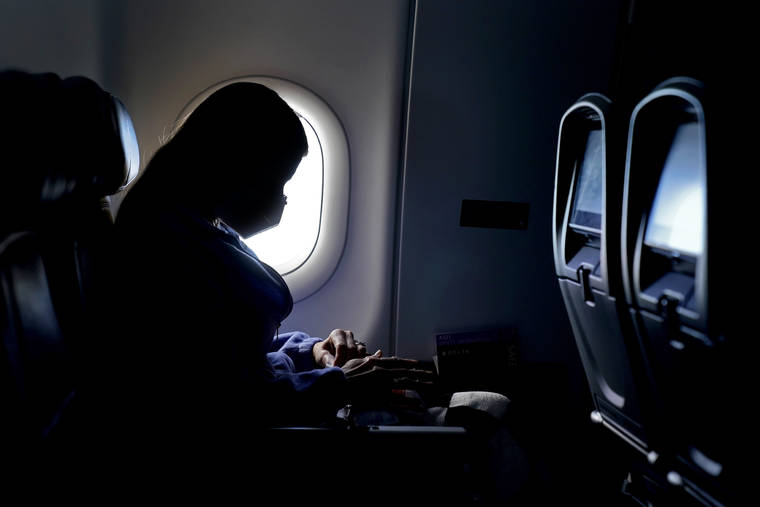Fully vaccinated people can travel safely again, CDC says


ASSOCIATED PRESS
A passenger wore a face mask during an airline flight, Feb. 3, after taking off from Atlanta. The Centers for Disease Control and Prevention, today, updated its guidance to say fully vaccinated people can travel within the U.S. without getting tested for the coronavirus or going into quarantine afterward.


NEW YORK >> Add travel to the activities vaccinated Americans can safely enjoy again, according to new U.S. guidance issued today.
The Centers for Disease Control and Prevention updated its guidance to say fully vaccinated people can travel within the U.S. without getting tested for the coronavirus or going into quarantine afterward.
Still, CDC Director Dr. Rochelle Walensky urged caution and said she would “advocate against general travel overall” given the rising number of infections.
>> RELATED STORY: Can I still spread the coronavirus after I’m vaccinated? Opens in a new tab
“If you are vaccinated, it is lower risk,” she said.
According to the CDC, more than 100 million people in the U.S. — or about 30% of the population — have received at least one dose of a COVID-19 vaccine. A person is considered fully vaccinated two weeks after receiving the last required dose.
Don't miss out on what's happening!
Stay in touch with breaking news, as it happens, conveniently in your email inbox. It's FREE!
The agency has said it would update its guidance on allowed activities for vaccinated people as more people get the shots and evidence mounts about the protection they provide.
Outside a San Francisco convention center, Kara Roache, a consultant with a tech company, welcomed the news after getting her second Pfizer shot.
“I’m thrilled that this summer there might be opportunities for us to go somewhere,” she said.
Roache said she normally travels overseas for leisure at least twice a year. Since the pandemic started, she’s only traveled to Utah and Texas for work.
“I’ll still be cautious. I’m not looking to go on a cruise. I’m not looking to be in mass crowds and I’ll probably not go overseas,” she said. “But absolutely, if it’s open and the CDC says we can do it, I’m looking forward to going somewhere in the states.”
For people who haven’t been fully vaccinated, the CDC is sticking to its recommendation to avoid unnecessary travel. If they do travel, the agency says to get tested one to three days before the trip, and three to five days after. People should also stay home and quarantine for seven days after travel, even if their COVID-19 test is negative, the agency says.
According to data through Thursday from Johns Hopkins University, the U.S. is averaging 66,000 daily new cases this past week, up from 55,000 two weeks ago.
The new guidance says:
— Fully vaccinated people can travel within the U.S., without getting tested for the coronavirus or quarantining. People should still wear a mask, socially distance and avoid crowds, the agency says.
— For international travel, the agency says vaccinated people do not need to get a COVID-19 test before leaving, unless the destination country requires it.
— For travelers coming into the U.S., vaccinated people should still get a negative COVID-19 test before boarding a flight, and be tested three to five days after arrival. They do not need to quarantine. The agency noted the potential introduction of virus variants and differences in vaccine coverage around the world for the cautious guidance on overseas travel.
Already, air travel in the United States has been picking back up. Although traffic remains down by nearly half from a year ago, more than 1 million travelers daily have been going through U.S. airports in recent weeks.
Airlines do not require COVID-19 tests or proof of vaccination for travel in the U.S.
The CDC cited recent research on the real-world effects of the vaccines for its updated guidance. Last month, the agency said fully vaccinated people could visit with each other indoors without wearing masks or social distancing. It also said vaccinated people could visit with unvaccinated people from a single household under similar conditions, as long as the unvaccinated individuals were at low risk for severe illness if infected.
The U.S. began its vaccine rollout in mid-December. Pfizer and Moderna vaccines require two doses given a few weeks apart. A one-shot vaccine by Johnson & Johnson was given the green light by regulators at the end of February.



